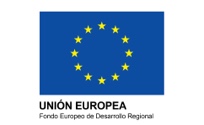
Axions and High Frequency Gravitational Waves
A strange photon and a candidate for dark matter

The axion is an hypothetical particle that appears in extensions of the Standard Model of Particle Physics that include the so-called Peccei-Quinn mechanism. This mechanism was postulated already 35 years ago to explain an standing problem of the Standard Model: the strong-CP problem. The Peccei-Quinn mechanism was proposed to solve this problem in a natural way, without required parameter fine-tunning. As a collateral effect, however, a new particle appears, the axion, which may have important observable consequences. In the first place, the axion is a neutral and very light (but not massless) particle, and it does not interact (or does it very weakly) with conventional matter. In some way one can see the axion as a “strange photon”. In fact, theory predicts that the axion, if it exists, could transform into a photon (and viceversa) in the presence of electromagnetic fields. This property of the axion is crucial for most of the experimental strategies of axion detection. But doubtless one of the most suggestive properties of axions is that, in a natural way, they could be produced in huge numbers soon after the Big Bang. This population of axions would still be present today and could compose the Dark Matter of the Universe. The existence of Dark Matter is widely accepted in the scientific community, but its nature is still a mystery. Together with WIMPs, the axions are among the most searched candidates in the context of the nature of Dark Matter.
RADES & IAXO





Este sitio web está patrocinado por la Conselleria de Innovación, Universidades, Ciencia y Sociedad Digital de la Generalitat Valenciana








